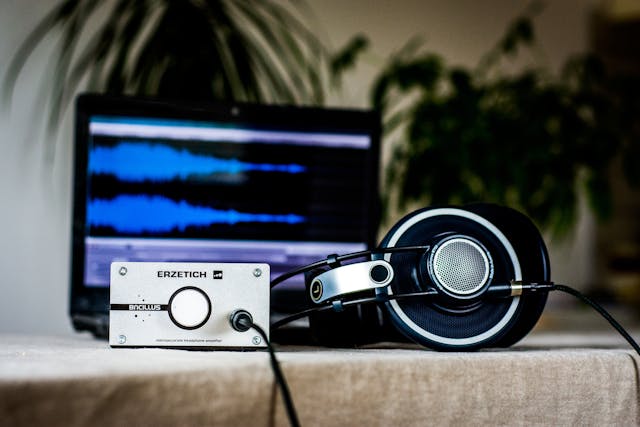When it comes to digital music and audio files, one of the most important concepts to understand is whether a format is lossy or lossless. These terms describe how the audio is stored, compressed, and ultimately heard. If you’ve ever wondered why a WAV file is so much larger than an MP3, or why audiophiles talk about “lossless quality”, this guide will break it all down.
What Does Lossy Audio Mean?
Lossy audio formats use compression techniques that remove parts of the sound that are considered less important to human hearing. The goal is to make files much smaller while maintaining a quality that sounds acceptable to most listeners.
Common lossy formats include:
-
MP3 – The most widely used lossy format, ideal for streaming and sharing.
-
AAC / M4A – Used by Apple and YouTube, typically sounds better than MP3 at the same bitrate.
-
OGG Vorbis – An open-source alternative often used in gaming and streaming.
-
Opus – Highly efficient for speech and real-time communication.
Advantages of lossy audio:
-
Much smaller file sizes (up to 90% smaller than WAV).
-
Quick to upload, download, and stream.
-
Compatible across almost every device and app.
Disadvantages of lossy audio:
-
Permanent data loss meaning once compressed, you can’t get the removed audio back.
-
Can sound noticeably worse at low bitrates (e.g., 64 kbps).
-
Not ideal for professional editing or archiving.
What Does Lossless Audio Mean?
Lossless audio formats compress audio without removing any of the original data. Think of it like a ZIP file for audio which reduces size but can be fully restored to the original.
Common lossless formats include:
-
WAV - Uncompressed and extremely large, the industry standard for recording and editing.
-
AIFF - Apple’s uncompressed equivalent to WAV.
-
FLAC - Compressed lossless, around half the size of WAV, but identical quality.
-
ALAC - Apple’s version of FLAC, used in iTunes and Apple Music.
Advantages of lossless audio:
-
Perfect fidelity meaning that every detail of the original is preserved.
-
Essential for professional recording, mixing, and mastering.
-
Preferred by audiophiles who want maximum quality.
Disadvantages of lossless audio:
-
Large file sizes. WAV is about 10 MB per minute of stereo audio.
-
Takes longer to upload, download, and stream.
-
Not always necessary for casual listening.
Side-by-Side Example: Lossy vs. Lossless
Imagine you record a 3-minute song at CD quality (44.1 kHz, 16-bit, stereo):
-
WAV (lossless, uncompressed): ~30 MB
-
FLAC (lossless, compressed): ~15 MB
-
MP3 (320 kbps lossy): ~7 MB
-
MP3 (128 kbps lossy): ~3 MB
The WAV file is the largest but keeps everything. FLAC cuts size in half with no loss of quality. MP3 shrinks the file drastically but throws away some data.
Which Should You Use?
The answer depends on your purpose:
-
Editing and Recording: Always use WAV or AIFF. You need full quality so edits don’t degrade the sound.
-
Archiving: Use FLAC or ALAC. You’ll save space without losing fidelity.
-
Streaming and Sharing: Use MP3 or AAC at 192–320 kbps. Quality is good enough for most listeners, and the files are easy to distribute.
-
Voice or Real-Time Communication: Use Opus, which balances efficiency and clarity at very low bitrates.
Converting Between Formats
Sometimes you’ll need to switch between lossy and lossless formats. For example:
-
Turning a WAV into an MP3 for sharing.
-
Converting an old MP3 into a WAV so your editing software can handle it.
-
Archiving music from lossy formats into FLAC for better organization.
WAVConverter.com allows you to convert between many formats like MP3 to WAV, M4A to WAV, or WAV back to compressed formats. The process is quick, browser-based, and requires no additional software, making it a practical solution for podcasters, musicians, and casual listeners alike.
⚠️ Tip: Converting a lossy file (like MP3) into a lossless file (like WAV) will not restore the lost quality — it just makes the file bigger and compatible with software that requires WAV.
Why This Matters
Understanding the difference between lossy and lossless audio matters because it affects:
-
File size and storage: Do you need 100 WAV files taking up gigabytes, or would 320 kbps MP3s suffice?
-
Sound quality: Will your audience notice the difference? For podcasts, probably not. For hi-fi music fans, definitely.
-
Editing flexibility: Lossy files degrade further when edited and re-compressed. Lossless formats keep their integrity.
-
Distribution: Some platforms (like YouTube or Spotify) re-encode your uploads. Starting with higher quality (WAV or FLAC) ensures minimal loss in the final product.
Final Thoughts
-
Lossy formats (MP3, AAC, OGG, Opus) are best for sharing, streaming, and casual listening because they save space.
-
Lossless formats (WAV, FLAC, ALAC, AIFF) are best for professionals, archiving, and situations where sound quality matters most.
-
Tools like WAVConverter.com make switching between formats simple, so you can always pick the right type for the job.
In short: record and archive in lossless, share and stream in lossy. That way, you get the best of both worlds. Pristine masters when you need them, and lightweight files when you don’t.
